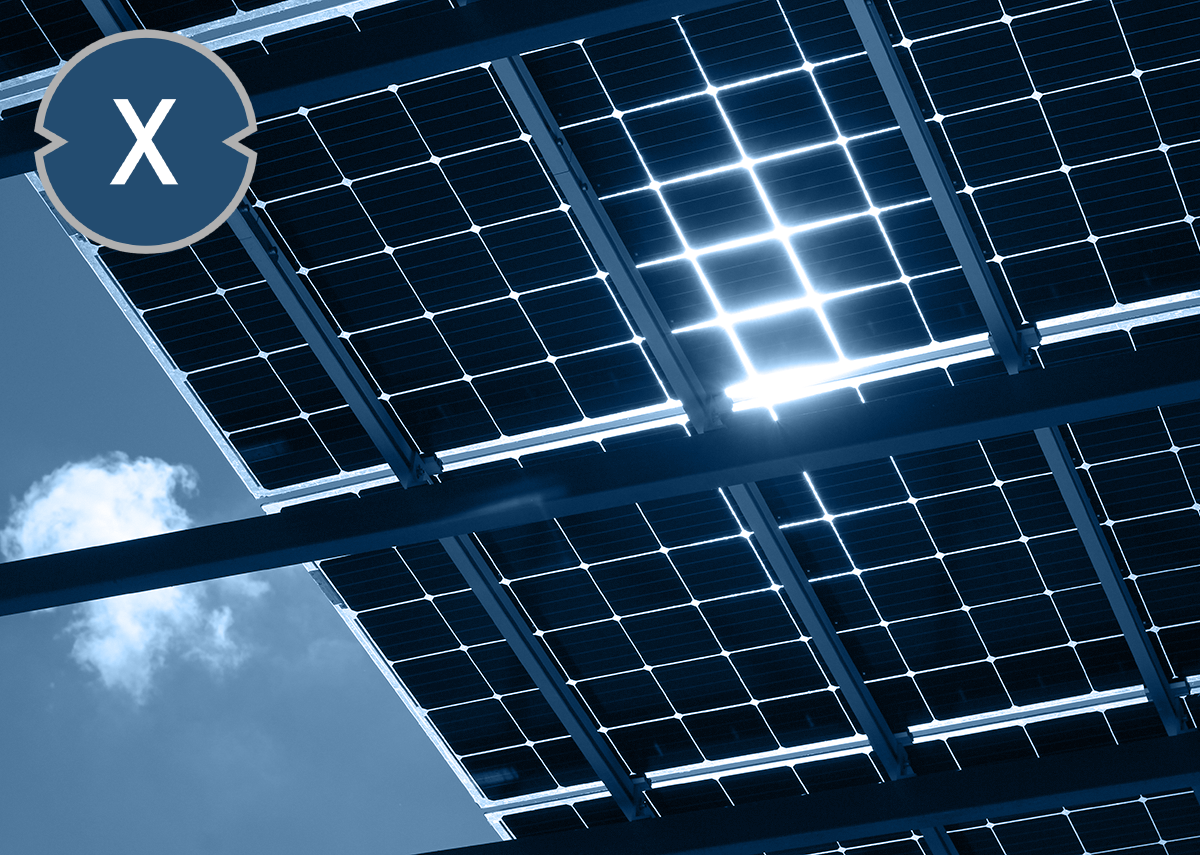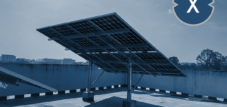A bifacial solar cell (BSC) is a photovoltaic solar cell that can generate electrical energy when illuminated from both sides, i.e., from the front or back. Monofacial solar cells, on the other hand, only generate electrical energy when photons strike their front surface. The efficiency of bifacial solar cells, defined as the ratio of incident light power to generated electrical power, is measured independently for the front and back surfaces under one or more suns (1 sun = 1000 W/m²). The bifaciality factor (%) is defined as the ratio of the back surface efficiency to the front surface efficiency at the same irradiance.
Bifacial solar cells were invented and first manufactured in the late 1970s for space and terrestrial applications and established themselves as the standard solar cell technology in the 2010s. It is foreseeable that they will be the leading approach to solar cell manufacturing by 2030.
How bifacial solar cells work
The vast majority of solar cells are made of silicon today. Silicon is a semiconductor, and as such, its outer electrons reside in an energy interval called the valence band, completely filling the energy levels of this band. Above this valence band is a forbidden band, or energy gap, where no electrons can exist, and further up is the conduction band. This conduction band is almost empty of electrons, but it is where the electrons from the valence band are placed after being excited by the absorption of photons. These electrons have more energy than the ordinary electrons of the semiconductor. The electrical conductivity of the silicon described so far, known as intrinsic silicon, is extremely low. A slight impurity with phosphorus atoms introduces additional electrons into the conduction band, making the silicon n-type and giving it a conductivity that can be influenced by changing the density of the phosphorus atoms. Alternatively, impurities such as boron or aluminum atoms can cause the silicon to become p-type, exhibiting a conductivity that can also be influenced. These impurity atoms accept electrons from the valence band, leaving behind so-called "holes" that behave like virtual positive charges. Silicon solar cells are typically doped with boron, causing them to behave like a p-type semiconductor, and have a narrow (~0.5 micrometers) surface n-type region. Between these two regions, the pn junction forms, generating an electric field that splits electrons and holes, directing the electrons to the surface and the holes to the interior. This creates a photocurrent, which is conducted away through metal contacts on both sides. Light emitted from the pn junction is not split, and the resulting electron-hole pairs eventually recombine, thus not generating a photocurrent. The roles of the p and n regions in the cell can be reversed, as explained here.
Accordingly, a monofacial solar cell only generates a photocurrent when the surface where the transition was formed is illuminated.
In contrast, a bifacial solar cell is designed so that the cell is active on both sides and generates photocurrent when one of the two sides – front or back – is illuminated.
The main advantages of biplane solar cells
Additional power generation gains: Compared to P-type solar cells, N-type solar cells tend to significantly increase efficiency. Bifacial solar cells, with their bifacial generation capacity and higher system efficiency, will have a broader application perspective and are particularly suitable for areas with heavy snowfall and distributed generation systems such as roofs, fences, and noise barriers.
The efficiency of the cell's rear side can reach more than 19%, and the incident backbeams can be used to improve the system's generating capacity, with the capacity increase per unit area being up to 10% ~ 30%.
The glass module with bifacial cell technology captures light on both the front and back of the module. Increasing light capture improves the module's efficiency. Up to 360 Wp of total power can be achieved via the active back side of the module (290 Wp on the front only / 320–360 Wp total).
The efficiency gain depends on the radiation situation (atmosphere and background).
Ground-mounted system with bifacial solar modules example
📣 The right and suitable solar modules for industry, retail and municipalities
Everything from a single source: solar module solutions specifically tailored to your photovoltaic system! Refinance or offset your future with your own electricity generation.
🎯 For solar engineers, plumbers, electricians and roofers
Advice and planning including a non-binding cost estimate. We bring you together with strong photovoltaic partners.
👨🏻 👩🏻 👴🏻 👵🏻 For private households
We are positioned across regions in German-speaking countries. We have reliable partners who advise you and implement your wishes.
- Plan photovoltaics for warehouses, commercial halls and industrial halls
- Industrial plant: Plan a photovoltaic open-air system or open-space system
- Plan solar systems with photovoltaic solutions for freight forwarding and contract logistics
- B2B solar systems and photovoltaic solutions & advice
Solar module consultation with Xpert.Solar – help & tips for the right and suitable solar module
I would be happy to serve as your personal advisor.
You can contact me by filling out the contact form below or simply call me on +49 89 89 674 804 .
I'm looking forward to our joint project.
Xpert.Digital – Konrad Wolfenstein
Xpert.Digital is a hub for industry with a focus on digitalization, mechanical engineering, logistics/intralogistics and photovoltaics.
With our 360° business development solution, we support well-known companies from new business to after sales.
Market intelligence, smarketing, marketing automation, content development, PR, mail campaigns, personalized social media and lead nurturing are part of our digital tools.
You can find out more at: www.xpert.digital – www.xpert.solar – www.xpert.plus


